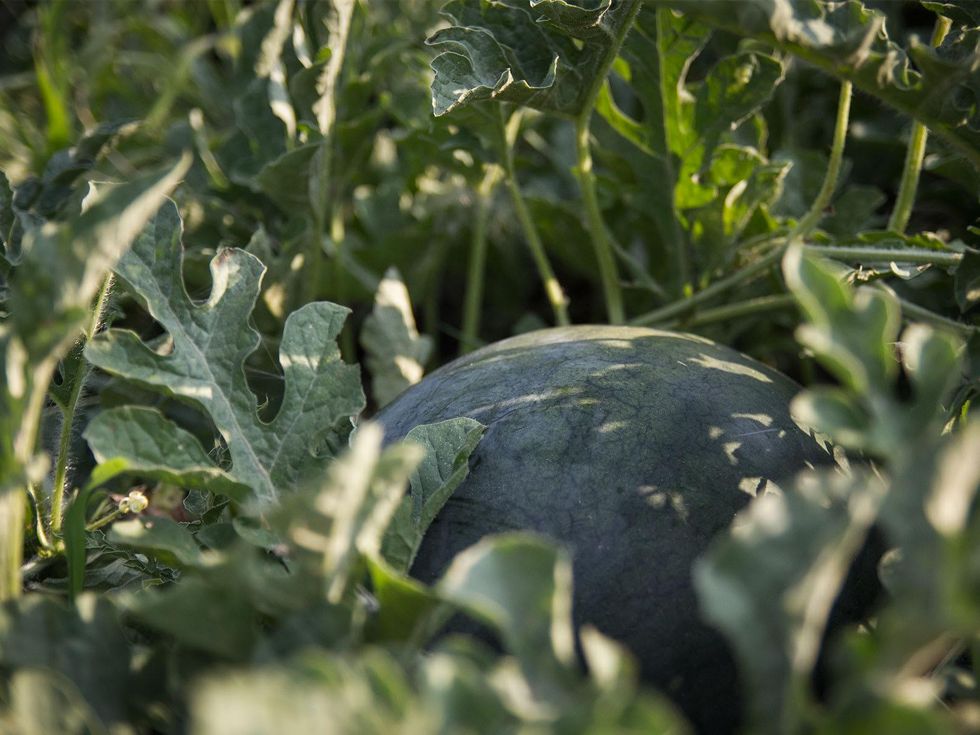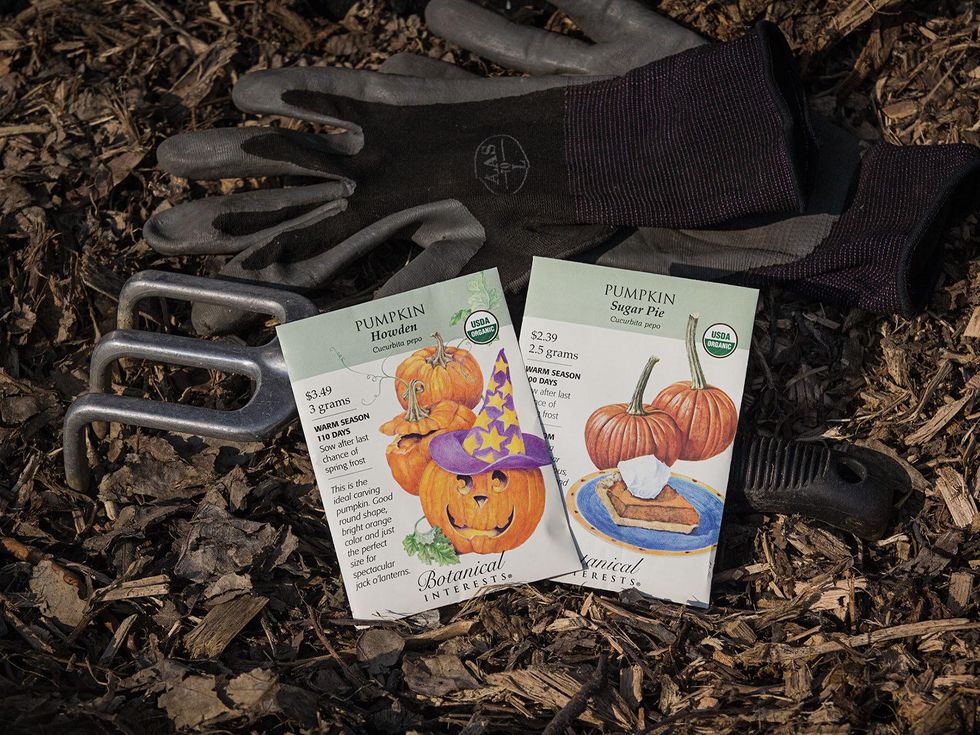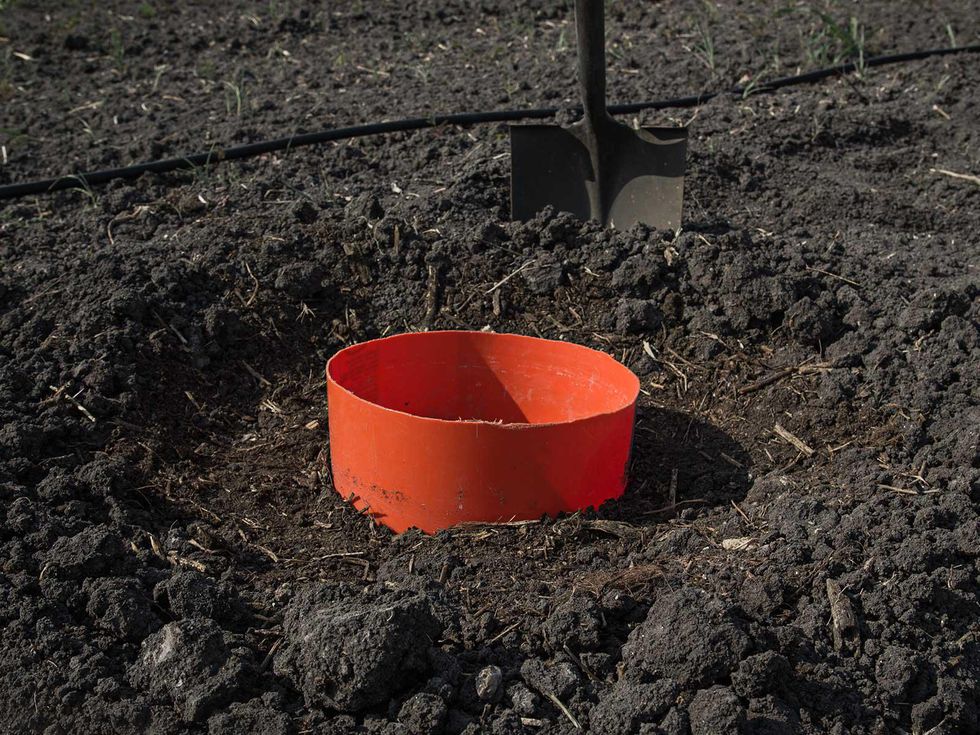The Farmer Diaries
North Texas farmer cracks secret watermelon code
Once July begins, serious gardeners start to think about jack-o'-lanterns and pumpkin pie. Pumpkins need about 100 days to grow. Counting back from the end of October puts us at about the first week of July as the right time to plant pumpkins for a fall harvest.
I've never grown a pumpkin successfully. I've either remembered them too late in the summer for them to have time to mature, or they've never made it past sprouting stage because of summer drought. But farming is a matter of trial and error. I'm not letting past failures discourage me from trying again. I'm giving pumpkins another shot.
The watermelon secret
Besides, until last year, I never had a watermelon work out. Every other year or so, I'd plant them along with cantaloupe. Every year, I'd harvest plenty of cantaloupes, but I'd never see even one watermelon grow larger than a baseball.
What watermelons need in Texas is the opposite of a mound: They need a basin.
But in the summer of 2012, I harvested about a dozen sweet, juicy watermelons from one 4-by-8-foot bed. This was an unprecedented success — and it wasn't a matter of scaling up. It wasn't like I'd harvested one or two good melons one year, then a few more the following year and eventually a dozen last year.
No, it was my seeing zero success every year before 2012, then instant success in 2012. This change of fortune came because I finally cracked the watermelon code.
What was the watermelon secret? Ignore what you read in gardening books and on seed packets about how to grow watermelons — specifically their recommendation to plant them in mounds. These mounds, or hills, are designed to raise the roots of the watermelon plants up from the ground and allow for drainage. Often, if a plant's roots remain too long under water, they'll rot and the plant will die.
In other parts of the country, that might make sense. But we live in Texas, where even our lakes have good drainage. We don't have a problem with water pooling up for prolonged periods of time anywhere. To plant a watermelon in a way that protects it from flooding is about as necessary as putting snow tires on our cars.
Watermelons need ample water to grow, and my planting them on mounds was the best way to ensure that they would never get a drop. Our soils create a nearly impermeable barrier to water once they dry out. Trying to saturate a mound of soil is next to impossible; the water just rolls over the top and down the sides. Worse than that, mounds dry out faster than soil at or below ground level.
Punch bowl
What watermelons need in Texas is the opposite of a mound: They need a basin.
I feel confident that I have an effective method for succeeding with crops that have failed for me in the past, especially those planted in the summer drought.
I came up with the idea of basins after I read Little House on the Prairie by Laura Ingalls Wilder. In the book, Wilder describes how watermelons grew along a creek bank near a home in which her family lived. Her mother warned against eating watermelon, but her father found a ripe melon and ate it. Afterward, he contracted malaria, apparently from mosquito bites. This indicated to me that the melons were not growing in a well-drained spot.
Lacking a creek bank, I tried to re-create an area where the soil could stay moist between watering sessions. Digging a basin was the only way that I could see working out.
I dug out an area of soil in the shape of an oblong bowl a few inches deep. When I watered the melons, the water pooled up, like filling a punch bowl. The water stayed pooled long enough to penetrate the hydrophobic surface of the soil and reach the roots several inches below. The watermelon plants thrived, producing all the melons I could eat for the summer.
Later, I learned that the basin approach to agriculture was nothing new. It's been used by Native Americans in the Southwest for centuries — not only for melons, but also for every crop. So I feel confident that I'm in good company and have an effective method for succeeding with crops that have failed for me in the past, especially those planted in the middle of the drought of summer.
Basin how-to
Using a hoe, I created a basin by dragging the soil out from a tilled area in my garden, forming a "bowl" about 3 feet in diameter and 5 inches deep. I made sure that the five or six seeds I planted per basin were below ground level, so that the roots will be in soil that stays moist longer than soil at ground level.
To one of my pumpkin basins, I've added the lower half of an old bucket as an experimental reservoir. I drilled small holes in the bucket to allow water to trickle slowly into the soil without dislodging soil or disturbing the plant's roots, which can happen when I use a watering can. If this added reservoir helps the plants in this one basin, I may make one for every basin in next season's garden.
Additionally, I added compost from my compost bins and Down to Earth's vegan fertilizer mix to each basin to nourish the growing pumpkin plants. In farming lingo, pumpkins are called "heavy feeders," which means that they need a rich, fertile soil.
I've chosen Howden pumpkins for jack-o'-lanterns and Sugar Pie pumpkins for cooking; both are available from Botanical Interests. Once the pumpkin seeds sprout, I'll heap several inches of mulch into the basins, which should make the top of the mulch level with the surrounding ground.
If not for my newfound success with watermelons, I'd not feel very optimistic about my pumpkin prospects. But soon I'll start harvesting another crop of sweet, Sugar Baby watermelons, each as big as a volleyball. I can't help but feel that this year, I'll be carving Halloween decor out of pumpkins from my very own garden as well.



